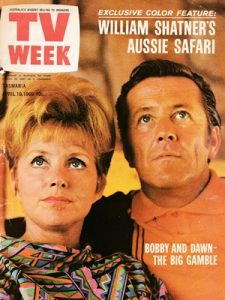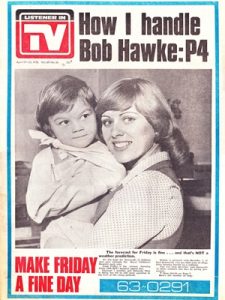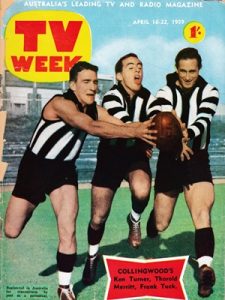 If there can be only one constant in television land, it is change – and nobody is immune from it. In years gone by we’ve seen changes both behind and in front of the cameras at all networks with varying levels of success.
If there can be only one constant in television land, it is change – and nobody is immune from it. In years gone by we’ve seen changes both behind and in front of the cameras at all networks with varying levels of success.
This year it was SBS‘ turn to ring in some major changes – and in doing so made plenty of headlines.
Managing director Shaun Brown came from TVNZ across the Tasman in 2003 to head Australia’s multicultural broadcaster. With Brown came news director Paul Cutler, a former colleague who had also worked for global media giant CNN.
Brown initiated a number of moves at SBS including re-working the schedule, launching some less traditional SBS fare including a dating show Desperately Seeking Shiela and a game show RockWiz. Some initiatives were more welcome than others, and in the revamp a number of long-term staffers had moved on – some voluntarily, others not necessarily so. The most notable departures from SBS were presenters David Stratton and Margaret Pomeranz who had left The Movie Show which they pioneered for SBS in 1986, to start up a similar program, At The Movies, at ABC.
However Brown’s most visible change came late in 2006 with the decision to restructure commercial breaks on SBS to appear within programs, as opposed to the previous custom of only in between programs or in ‘natural program breaks’ such as half-time in football matches. The change in this structure was based on the belief that viewers switch off SBS in between programs, hence advertisers’ messages were being ignored. Running commercial breaks inside programs would therefore make them less likely to be skipped by viewers – and hence would be worth charging a higher premium to advertisers.
The change was understandably met with opposition. It is true that SBS has quite happily run commercials since 1991 without the sky falling in, though it was only allowed around five minutes per hour as opposed to the commercial networks playing anything up to fifteen minutes of ads each hour. But changing the structure of the commercial breaks it was feared would open the floodgates to more advertising per hour, and more frighteningly for SBS supporters, the broadcaster’s increasing dependence on the advertising dollar having an influence on its program content and news coverage.
It is also feared that this increase in advertising time on SBS could also set a precedent that could one day see the same change happen to ‘aunty’ ABC which takes pride in being commercial-free on its radio and TV outlets – except for high-rotation promotions for ABC merchandise.
However if the move to its commercial breaks wasn’t enough cause for concern amongst SBS loyalists, Brown had sights set on re-working another SBS landmark – World News Australia.
Since its inception in 1980, World News has been widely acclaimed for providing a global perspective on news coverage by not focussing predominantly on local stories or tabloid headlines. And no cute animal stories to end the bulletins either – World News was unashamedly serious particularly with so much conflict happening away from our shores. In the overall scheme of things World News was never going to win any ratings surveys but it maintained a loyal audience and set SBS apart from the other TV news media – particularly commercial TV.
Former Sydney radio announcer George Donikian was the first newsreader back in 1980 but in 1988 heard the call of commercial television and joined the Nine Network – even though he moved to a relatively minor role at Nine, it was perhaps a belated sign that commercial TV had finally accepted that its news presenters did not have to all be mono-cultural.
Replacing Donikian at the World News desk was a name already familiar to those at SBS – Mary Kostakidis.
 Unlike the more routine TV custom of hiring news readers from the ranks of journalists, Kostakidis came from within management. Kostakidis was part of the founding management team when SBS was forming its new television channel back in 1980 – and was involved in setting up the station’s subtitling unit, as well as program purchasing, classification and policy. In 1986, Kostakidis also added acting to her resume, playing Rebekah Elmaloglou‘s mother in the mini-series Five Times Dizzy.
Unlike the more routine TV custom of hiring news readers from the ranks of journalists, Kostakidis came from within management. Kostakidis was part of the founding management team when SBS was forming its new television channel back in 1980 – and was involved in setting up the station’s subtitling unit, as well as program purchasing, classification and policy. In 1986, Kostakidis also added acting to her resume, playing Rebekah Elmaloglou‘s mother in the mini-series Five Times Dizzy.
For almost twenty years, Kostakidis was the main face of World News – acclaimed for her delivery of the day’s news stories with class, sophistication and integrity, and for giving the the news the gravitas that it needed without sensationalism.
The situation stayed largely unchanged until 2007 – when Brown and his news chief Cutler decided to overhaul the half-hour news bulletin. The first change was to dismantle the long-running sports program World Sports which supplemented the half-hour news bulletin. World News Australia (the ‘Australia’ was added to the title in 2004) would then be expanded to a one-hour format to fill the half-hour gap left by World Sports.
The next change was for Cutler to to bring a second newsreader to the World News desk, one of his former CNN talents Stan Grant.
In hiring Grant at SBS, what Cutler possibly had not realised was that while Grant had won a number of awards for journalism both here and overseas, he did not carry that sort of credibility with the Australian viewing public.
Grant was a former ABC reporter who made the move across to commercial TV in 1992 to host Seven‘s new current affairs program Real Life. It was quite a leap for a reporter with a relatively low profile to suddenly be hosting a national current affairs program. The program often struggled up against Nine’s evening flagship A Current Affair, with Grant seen as lightweight up against his Nine rival, the very popular Jana Wendt, and his predecessor Derryn Hinch who had since moved to Ten. Then the current affairs satire Frontline appeared on ABC, fronted by fictional host Mike Moore (played by Rob Sitch) who it was rumoured to have been loosely based on Grant.
Grant’s credibility in Australia wasn’t helped either by his personal life, when in 2000 he left his wife for a romance with a colleague, Tracey Holmes. After being shamed by the tabloid press, the pair were sacked from Seven and went overseas where Grant ultimately ended up at CNN in China, working for Cutler.
The arrival of Grant to World News Australia, announced at the end of 2006, was reportedly not met kindly by Kostakidis, who had read the news solo for almost twenty years and was now being sidelined to sharing the role with her new colleague.
Adding salt to Kostakidis’ wounds was the re-formatting of World News Australia to incorporate the new commercial break structure, something which she had openly protested in the past, and also a perceived ‘dumbing down’ of the news service as a means of grabbing more ratings and hence more revenue, working against the traditional principles of SBS – which she was personally involved in setting up. For Kostakidis, it must have surely been a bitter pill to swallow the night that World News Australia had as its lead story the latest on celebrity socialite and jailbird Paris Hilton.
In another instance Kostakidis made a blunt on-air assessment of one celebrity news story:
The off-screen relationship between Kostakidis and Grant was reportedly less than amiable, and as a result attempts to have some sort of casual interaction on screen between news stories also fell flat.
The tension came to a head in August when Kostakidis signed off from the news bulletin as normal on the evening of Friday 10 August. She left the office and drove home, and never returned to the news room. Officially she was on sick leave, but it was apparent that there was more to it than that – and soon after came news that Kostakidis had hired a prominent Melbourne lawyer to represent her in legal action against the network – citing a breach of contract due to the significant change to her newsreading duties, and bullying by management. The case was able to be settled out of court, with details of the settlement to be kept confidential.
Kostakidis’ only statement after the settlement was “I would like SBS viewers to know that I leave with absolute goodwill towards the organisation and wish it all the best.”
And despite all the upheaval, headlines and legal negotiations – it appears to have been for nought. Ratings for World News Australia have fallen by tens of thousands since the revamped format was introduced back in January, the broadcaster has lost its long-standing newsreader, and there are now reports that Stan Grant, whose appointment appeared to be the catalyst for a lot of the uneasiness, is now considering leaving SBS to return overseas, possibly to al-Jazeera English or back to CNN.
And a year after SBS restructed itself to run commercial breaks during programs – the end result at the close of the 2007 ratings year has seen the broadcaster increase its prime-time audience share by a mere 0.1 per cent when compared to 2006. The question perhaps should be asked, has it been worth all the bother?







